Eike Schmidt, director of the Uffizi in Florence, talks to Thomas Marks about plans to reopen the galleries as the Italian government eases lockdown – and the challenges that may lie further ahead.
You’re planning to reopen the Uffizi Galleries in mid May, subject to a decision from the Italian government. Are the arrangements for reopening in some ways more challenging than those for closing?
We are ready to open when the government allows it. When we first closed, we enacted the same closing procedure that we perform every evening – and in fact, when we had to close on 8 March, the government decree reached our offices about half an hour after we had opened the museum, when there were several dozen people inside who were able to complete their tours in almost empty galleries. Since then, we’ve implemented a new system, more like what used to be our highest level of closure, which is when we close the museum for Christmas.
The Uffizi has in recent years limited visitor numbers and taken other measures to combat overcrowding in the galleries. But will the museum need to be more proactive in supervising, and even policing, the crowds after reopening?
Certainly. We will be implementing additional measures and will also have to lower the number of people who can be in the gallery at any given time – it will probably be half our normal limit of 900 people, so 450 people. The details will all depend on further government rules that we’re expecting to be communicated in the coming days and weeks, and which of course might change along the way. We have to be very flexible in putting new rules and laws into action. That’s true of face masks, for example: at the moment these aren’t required nationwide, but the region of Tuscany requires them.
If we have 450 visitors, that’s 44 sq m of gallery space per person – which is plenty of space for visitors not to come within a 180cm radius of one another. In every challenge there are also advantages: I don’t think people will want to move around in groups so much, so it will be a far more individualistic experience, with visitors interacting more with the works of art than with crowds of people. We already see that in the low season and early in the morning [the Uffizi opens at 8am], and based on that experience I’m optimistic that visitors will have a positive experience of the art.
Movement between Italian regions is likely to be restricted when the lockdown is relaxed, and it will be some time before international travel as we used to know it recommences. Will the Uffizi become a museum for Florentines, rather than tourists, over the summer?
I very much think so. We’ve already sensed this through our social media offering, which we’ve stepped up during this period. We’re getting a lot of comments on our Facebook videos, which we publish every morning, from Florentines and Tuscans – many of whom now watch the videos every day. Plenty of local residents have an annual ticket for the Uffizi, but there are others who say, for example, that they were last here as a schoolgirl, and that as soon as the museum reopens they want to come back. We’re establishing new local and regional connections – and it will be important that we retain them in the future.
Italian schools aren’t going to reopen until September. What more will the Uffizi do to engage with a younger demographic over this period?
We know that we won’t have any school groups in the museums for a while – probably not even next spring, since even if there’s a vaccine for Covid-19 by that point it will take time to roll it out. But we can really interact with young audiences via social media. For example, our education department has a special Facebook channel that is geared towards younger children, up to elementary school. And this week we launched the Uffizi TikTok account. Even if we can’t currently provide face-to-face educational activities, we’ve kept on all the contractors in our education department and they’re producing online content for us – videos, games and so on – so you will see more over the next few months.
The Uffizi Galleries will have been closed for more than two months by the time they reopen, and their activities will be limited when they do. How will that affect the museum’s finances and future programme?
In terms of exhibitions, we haven’t had to cut anything – we had resources from last year and we’ve been continuing to run on them. But as of now, we’ve already lost more than €10 million of revenue, and that’s certainly something that we’ll have to work with by pushing some of our building projects into 2021, by slowing some of them down. In terms of employees, we have been fortunate: the staff is divided between government employees, who can neither be hired nor fired – so they have safe jobs – and employees with contracts. For 2020, the latter are safe; we have enough resources to guarantee that we can keep them on.
Many employees are doing different work to what they usually do: instead of being assistants in the galleries, or helping with security, they are assisting with research and digitisation projects. That means that in the future we’re going to be ahead in these areas – things that we’re able to experiment with right now will certainly be part of the new normal in terms of our working practices.
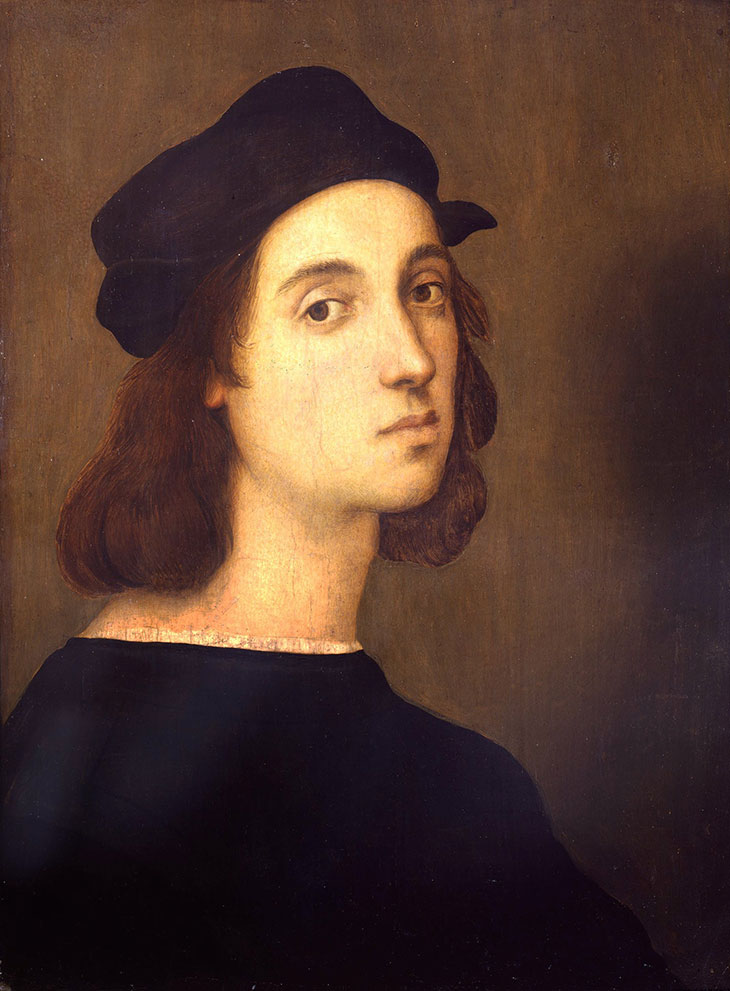
Self-portrait (1506), Raphael. Gallerie degli Uffizi, Florence
Turning to collaborative projects, will the Raphael exhibition at the Scuderie del Quirinale in Rome continue, and will the Uffizi be able to extend its dozens of loans to the show if so?
Absolutely. We’re working on extending the exhibition, but the Uffizi will definitely leave all the works in Rome for as long as it takes. We are celebrating Raphael this year, and there are plenty of months ahead: if it’s necessary to keep them there until 31 December, we’ll keep them there until then.
Do you foresee a future for international loan exhibitions on that scale in coming years?
It will be challenging in the longer term, and not just because of the aftermath of the coronavirus pandemic, but also because costs for those kinds of exhibitions have gone up significantly over the past decade. Crises often foreground existing problems. I think we will see blockbuster exhibitions in the future, even in the near future, but there will be fewer of them, and I think we also have to rethink the rhythm of exhibitions. Museums generally have exhibitions on for two to four months, but in order to put on a really important show in the future, perhaps we should look at a six- to eight-month period – and not make exhibitions that travel to two or three venues, but simply say: ‘This is going to be our 2021 show.’ We have to think about more sustainable ways of making exhibitions.
You’ve been in the museum frequently during the period of closure. What has that experience been like?
In the first few weeks it was truly eerie. There was total silence, to such a degree that you could hear the noise of the air conditioners and it almost felt like being on the shore of an island listening to the ocean. But then every 10 or 15 minutes, there were ambulance sirens – a reminder of how serious the situation was outside the walls of the museum. That makes you look differently at works of art.
I do make my rounds every day with people on security and technicians, as well as with people on the digital team – in the first two weeks we filmed a lot of videos with a handful of staff. For many of those we used the people who needed to be in the museum – a lot of our security guards are art historians, archaeologists, architects or classicists, often with PhDs, and they know the collection so well that it made sense for them to speak in the videos. We wanted that personal approach.
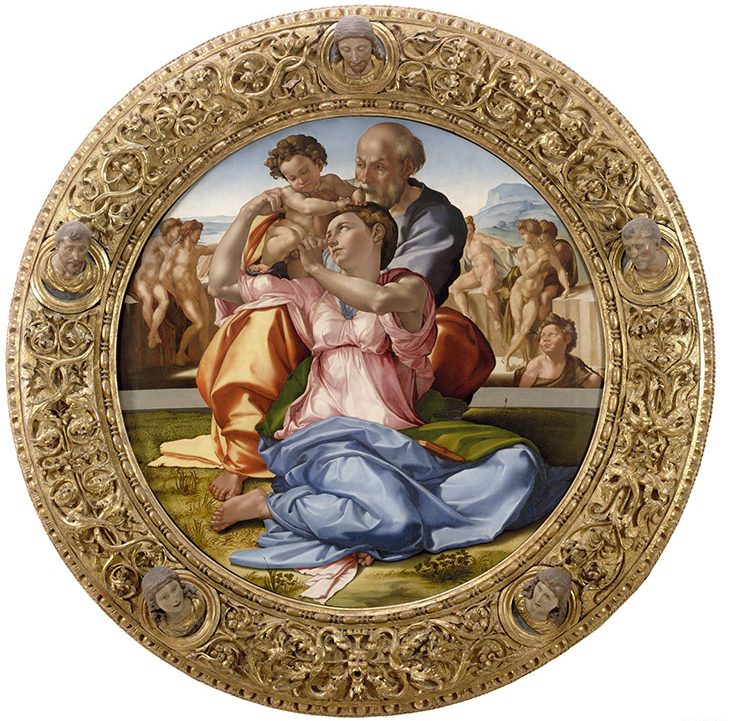
Holy Family, known as the Doni Tondo (1505–06), Michelangelo Buonarroti. Gallerie degli Uffizi, Florence
Has your sense of the value of museums changed during this crisis?
Every time something negative happens in our lives, we cherish the good things even more. It’s been a privilege to visit the museum during this period, of course, to be one on one with some of the greatest artworks ever made: the Doni Tondo, the Botticellis, the Medusa by Caravaggio, as well as works from other cultures at the Pitti Palace and great botanical specimens at the Boboli Gardens. This spring, with some of the gardeners, I’ve been fortunate enough to witness the flowering of citrus trees that arrived in Florence in the 16th or 17th century, or at least of their grandchildren. Yes, that has been uplifting – but it’s not something I want to keep for myself.
Unlimited access from just $16 every 3 months
Subscribe to get unlimited and exclusive access to the top art stories, interviews and exhibition reviews.

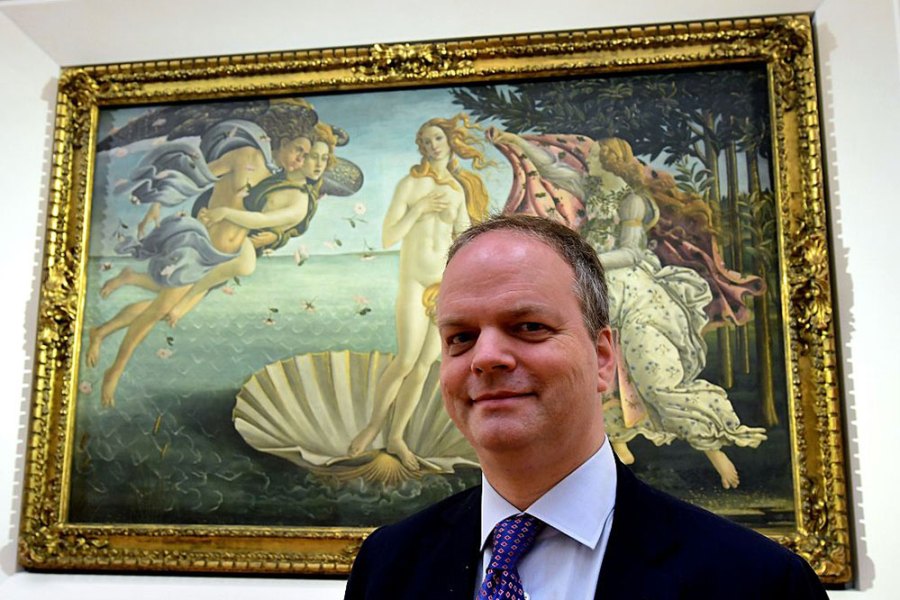
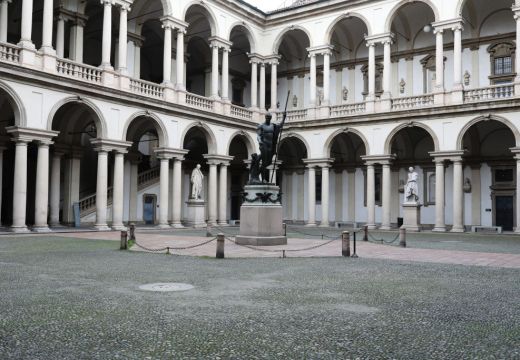
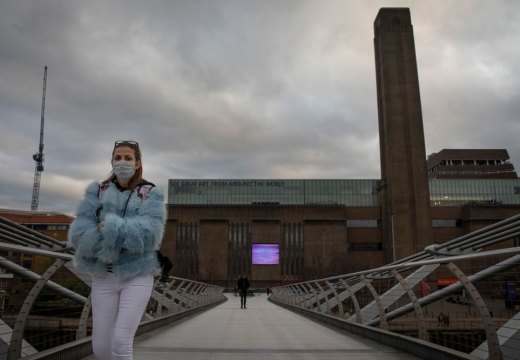
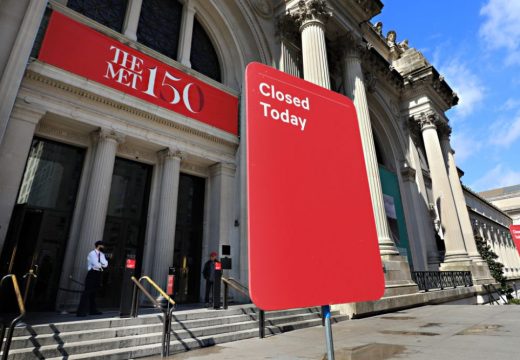









![Masterpiece [Re]discovery 2022. Photo: Ben Fisher Photography, courtesy of Masterpiece London](http://www.apollo-magazine.com/wp-content/uploads/2022/07/MPL2022_4263.jpg)
It’s time for the government of London to return to its rightful home